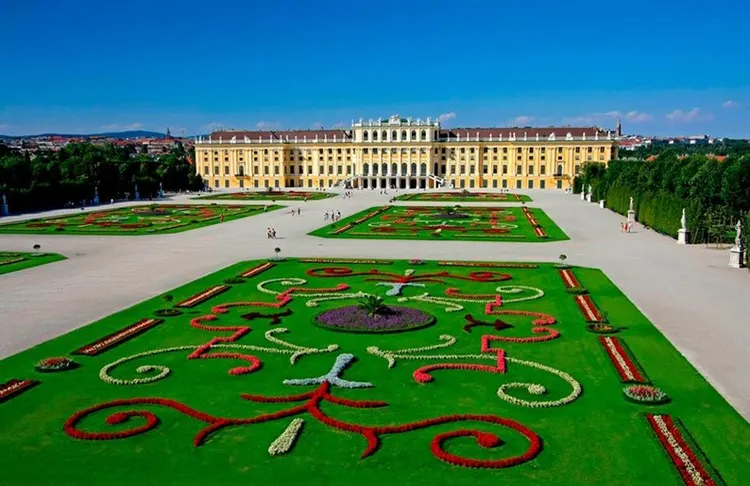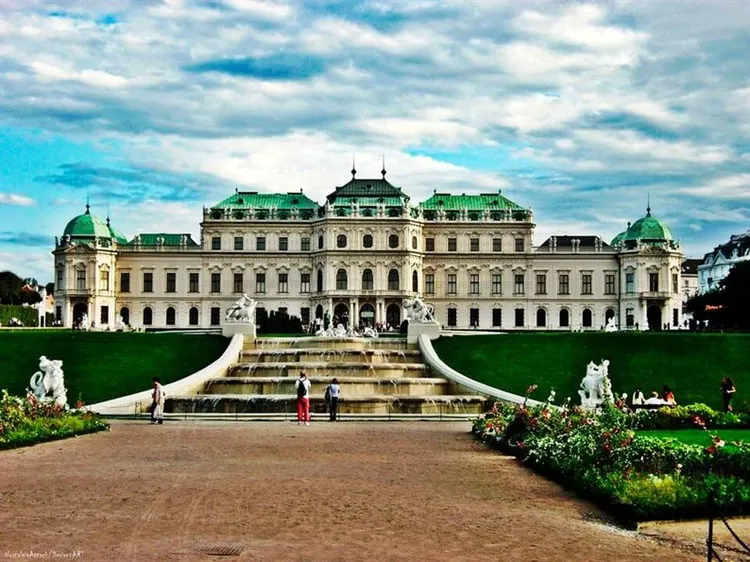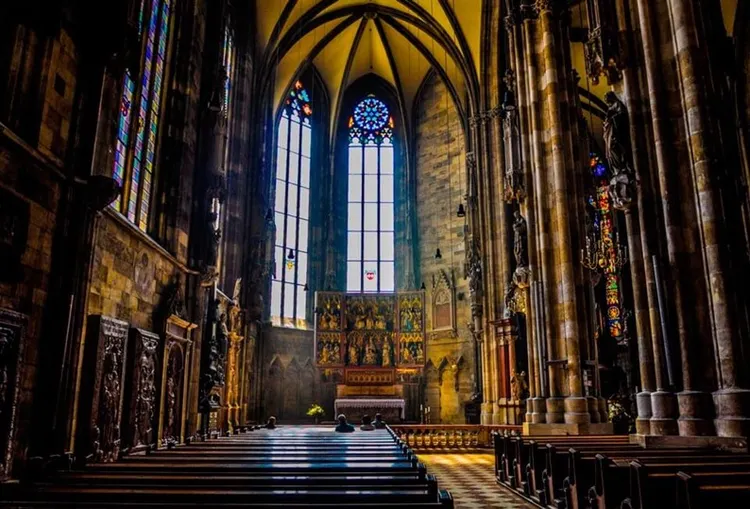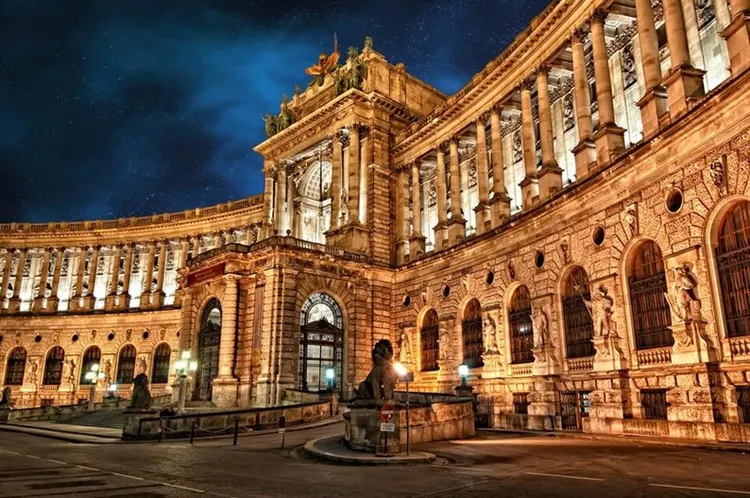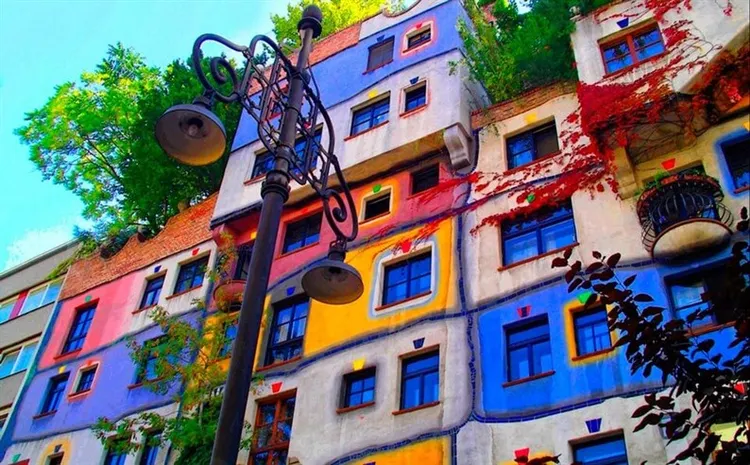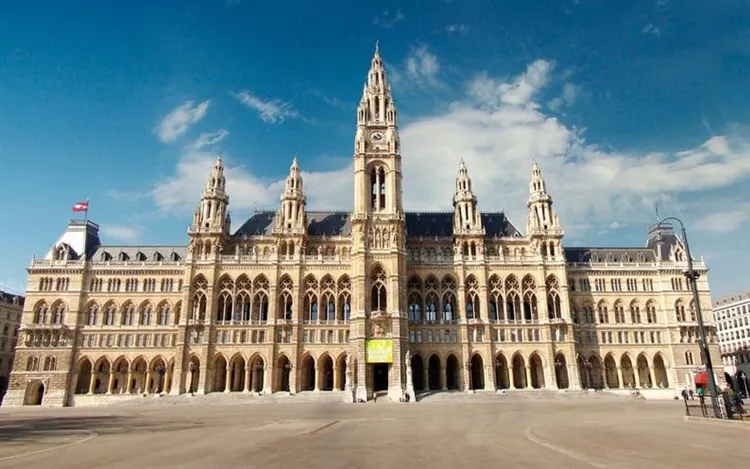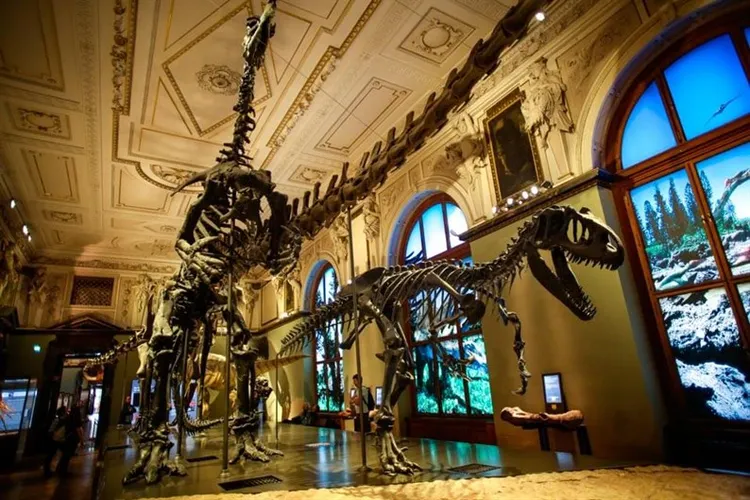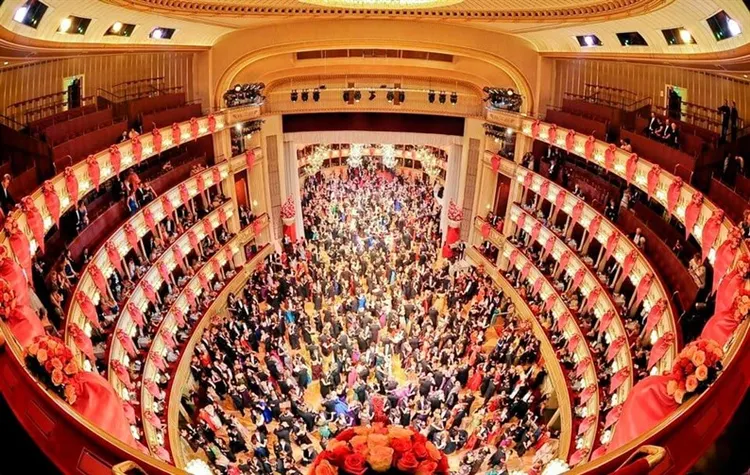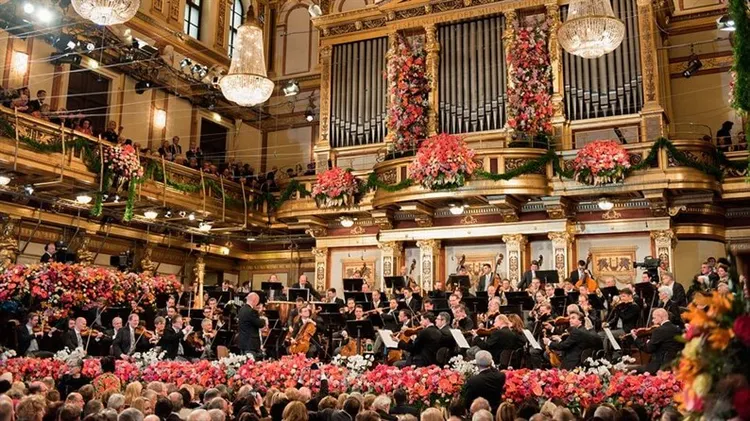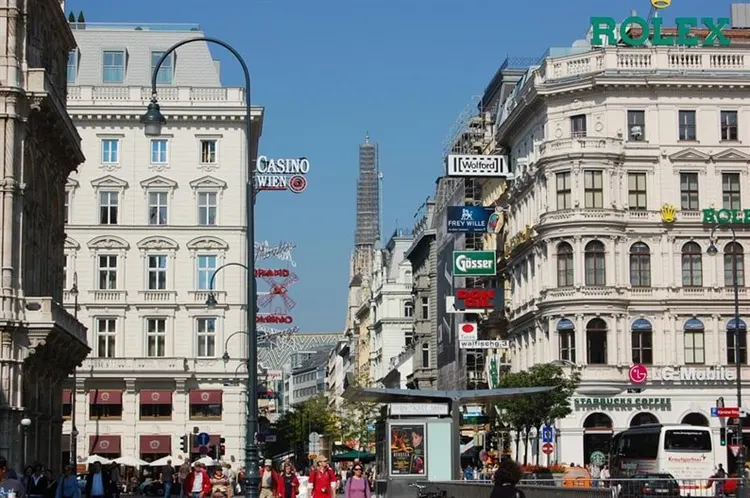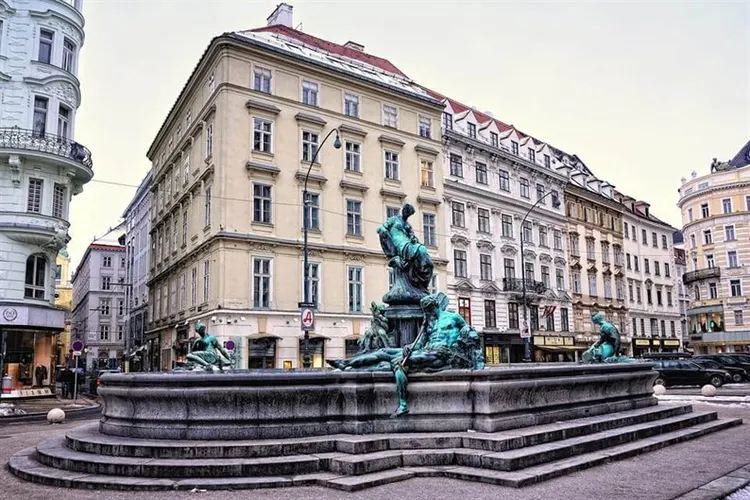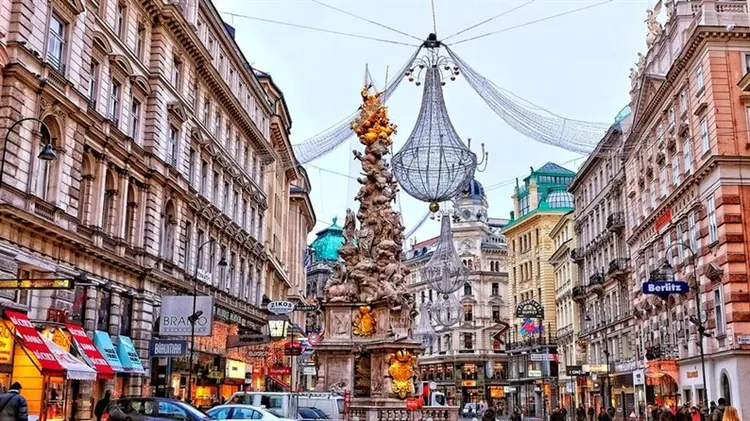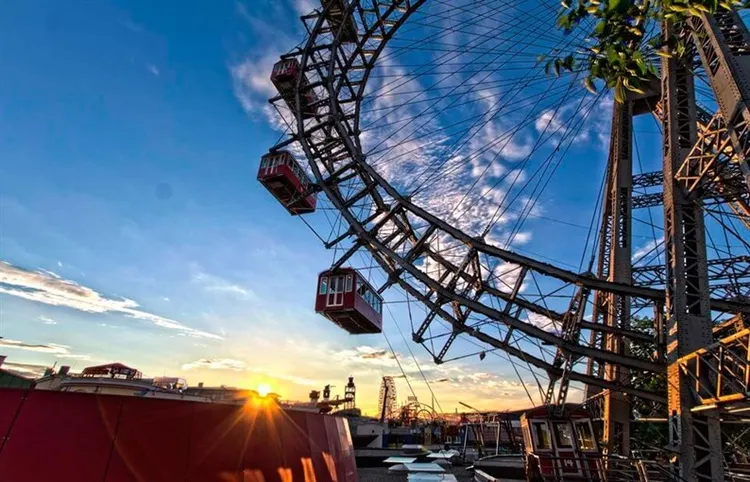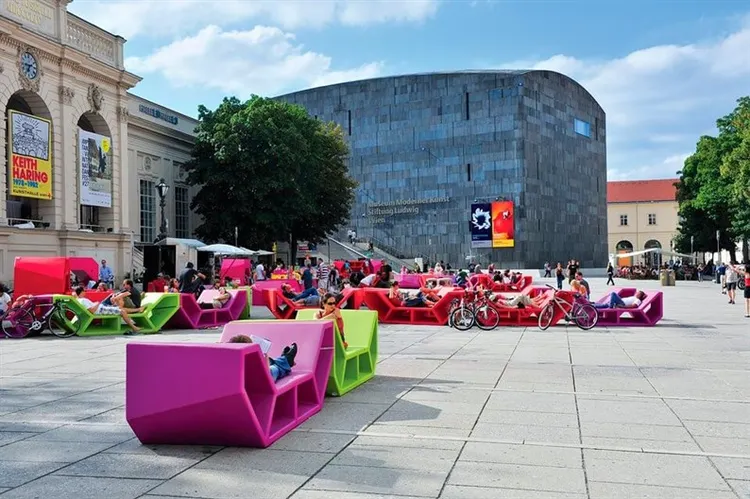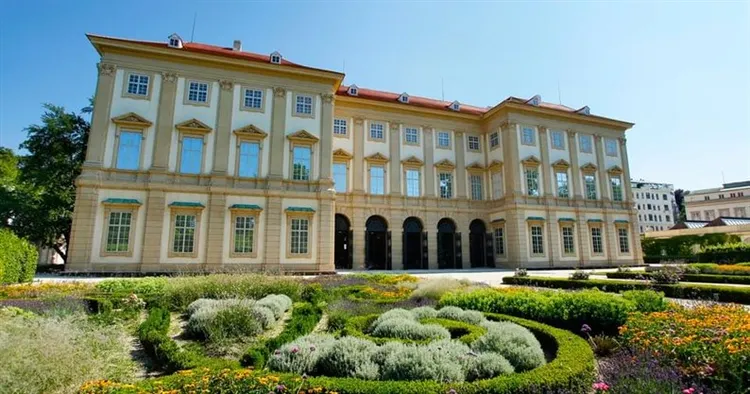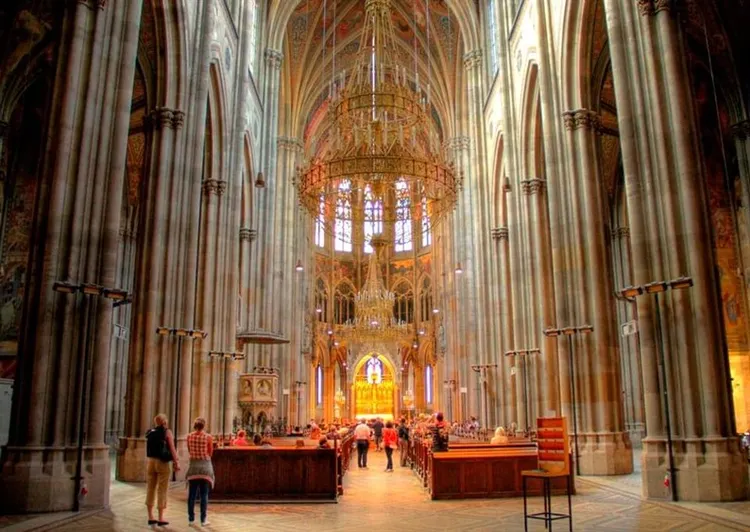What to see in Vienna in 1 day on your own – route, photo, description, map
If you have no more than 24 hours to get acquainted with the unique sights of the capital of Austria, then we are ready to share a busy route. You will see the most interesting places and are guaranteed to get a lot of positive emotions. Do not forget about comfortable shoes and clothes, charge your phone, because there are so many kilometers and colorful photos ahead. So, what can you see in Vienna in one day on your own.
Schönbrunn Palace
The architect B. von Erlach developed a project for a country hunting castle at the direction of Emperor Leopold I. At the end of the 17th century. the construction of the central building with 2 symmetrical wings began. A park was laid out opposite the main entrance (designed by J. Trehet). Under Maria Theresa, the palace became the summer residence of the imperial family. In the 18th century a separate building for the theater was built in the courtyard. Under the leadership of J. Jadot, a zoo has been set up on the adjacent territory.
The park area is divided into:
Visitors have the opportunity to see famous sights: the Cave of the Sibyls, Roman ruins, a group of naiads, the house of pigeons, the fountain of Neptune.
Visiting times:
Skip-the-line entrance to the palace – 54 €
Evening concert and dinner at Schönbrunn Palace – 81 €
Palace complex Belvedere
The well-known philanthropist Eugene of Savoy ordered I. von Hildenbrandt to build a residence for summer holidays. The plan provided for the construction of 2 buildings: the upper one for representative needs and the lower one for personal apartments. The space surrounding the palace was occupied by a luxurious park. D. Girard was engaged in its landscape design. The complex was completed in 1725. At the end of the 18th century. the buildings housed a collection of court art. In the 20th century The Belvedere became a branch of the Austrian Gallery:
Book a private transfer from the airport to your hotel for 2 758 RUB
Visiting times:
A walk in the park during daylight hours is free.
Cathedral of St. Stephen
Stephansdom is one of the most ancient buildings of the Austrian capital. The building dates from the middle of the 12th century. The church received the name of St. Stephen in 1220. The material for the towers was taken from ancient pre-Christian buildings, therefore they began to be called “Pagan”. In 14 st. At the basilica appeared Albertine choirs in the Gothic style. In the 15th century erected the South (Steffal) and North (Adlerturm) towers. Their presence testified that the church has the status of episcopal or cathedral. Works on interior decoration were carried out under the direction of A. Pilgram. He created a plinth to house the organ and a pulpit for sermons.
The voice of Stephansdom for centuries has been Pimerin, a bell smelted from a Turkish cannon. He announces the coming of the New Year to the Viennese.
Cathedral options:
Open to visitors daily (except Sunday) from 6 a.m. to 10 p.m.
Palace complex Hofburg
The Hofburg Palace has served as a residence for monarchs for centuries:
There was a tradition according to which the new ruler could not occupy the apartments of his predecessor. Therefore, each monarch had his own rooms in the palace, and the building was subjected to repeated expansion and reconstruction. The Hofburg does not have a single style. The palace has: 18 wings, 54 stairs, 19 courtyards, 2.6 thousand rooms and halls.
There are 2 types of entrance tickets:
Visitors are accepted daily:
Hundertwasser House
The famous Austrian artist, member of the Academy F. Hundertwasser, became famous for his denial of linearity and geometricity in architecture. He tried to express the main principles of modern design when developing the project for the Vienna residential building. The design turned out to be extraordinary, bright, memorable. The lines of the body are uneven, sinuous. The floors are different colors. Pieces of mirrors were used as a material for decorating the facade surface.
The house was completed in 1985. D. Kravina was officially recognized as the co-author of the project. There are about 50 apartments in the building, where up to 200 people live. The house also houses offices, cafes, children‘s playrooms. On the roof there is a garden with flower beds and trees. A small fountain was built opposite the front part. It is almost impossible for outsiders to get inside the building and inspect it. there is a strict privacy law.
Tourist Card: discounts and free transport – 17€
Hop-on hop-off bus tour – 29€
Mozart concert at the Golden Hall of the Vienna Philharmonic – 50€
Tourist card for 1, 2, 3, or 6 days – 70€
Ferris wheel ticket – 12 €
Entrance fees to the Belvedere – 14 €
Vienna City Hall
The building to accommodate the city government was built in the 70-80s of the 19th century. The German architect F. von Schmidt won the competition for the best project. They decided to build the house in the inner part of the city on Glacis Square. The exterior of the building combines neo-Gothic and eclectic features. Numerous courtyards are inherent in the Baroque style.
The body is large:
The town hall has its own tower, which reaches a height of 105 m. On its top is the figure of the standard-bearer Rathausman, made of metal. The Iron Guard is considered the symbol of the city. The main front room of the town hall is the hall. It is used for various ceremonial events. The interior is decorated with sculptures of famous natives of Vienna. The building is open for free visits daily from 9 am to 9 pm Special tours are held at 1 pm on Monday, Wednesday, Friday.
Museum of Natural History and Museum of Fine Arts
Both museums are located on the square dedicated to Empress Maria Theresa. They stand on opposite sides and outwardly resemble each other. Authors of architectural projects and sketches of the interior space: Gottfred Semper and Hasenauer. The exposition of the Kunstistoriches presents objects of ancient cultures and civilizations (Etruscan, Greek, Egyptian, Roman, early Christian). The art gallery is proud of the paintings: Titian, Raphael, Caravaggio, Velazquez, Rembrandt, Bosch. Open 10-18 hours daily (except Mondays). Entrance fee for adults 15 €.
The basis of the Naturhistoriques Museum was the personal collections of the Austrian monarchs. Halls waiting for visitors:
Young nature explorers will enjoy the Kindersaal exposition.
Naturhistoriques works:
Day off on Tuesdays.
Vienna Opera
The building of the opera house was designed by architects: A. Sikkardsburg, E. van der Nyul. The building is made in the spirit of the Renaissance. Its opening took place in 1862, and the first performance was staged in 1869. Mozart's opera Don Giovanni was chosen for the premiere. During the bombing at the end of the war, the corps suffered significant damage. Restoration work was led by E. Boltenstern and Z. Kozak. In 1955, the Vienna Opera celebrated its second birth. Beethoven's Fidelio was performed on stage.
On the open gallery along the facade of the building there are bronze statues (author E. Gakhnel):
The stage is decorated with an iron curtain depicting Orpheus and Eurydice. Guided tour costs 6 €. It is held every day except Sunday and lasts 45 minutes.
Ticket prices depend on the performance and seating in the hall.
Vienna Philharmonic
The Philharmonic Orchestra of the Republic of Austria is widely known throughout the world. His capital performances are held in the Golden Hall of the Vienna Philharmonic. The first musical institution in the capital of Austria began to operate in the 19th century. The concert hall accommodated about 700 classical music lovers. At the age of 50 of the last century, a new philharmonic building was erected. It was named Musikverein. The author of the project was the Danish architect T. Hansen. The building is made in neoclassical style. Its facade is decorated with numerous pilasters, columns and sculptures.
The interior space is designed for 1744 seats. The image of the Golden Hall of the Philharmonic can be seen on a gold coin minted in Austria.
Checkout Hours (Monday – Friday):
Körntnerstrasse
The main pedestrian artery of the capital is the street named after the Austrian province of Carinthia – Körntnerstrasse. It is laid in the central part of the city and is part of the golden semicircle, along with Graben and Kohlmarkt streets. The Carinthian Road connects Charles Square with Stephansdom. The overpass appeared in the 13th century. It led from the center of the settlement to the Carinthian Gate.
The street is always crowded. Visitors are attracted by shops, cafes and hotels. The oldest building on Carinthian Avenue is a palace that belonged to the Esterházy family. Its construction was completed in the 17th century. Another famous attraction is the Todesco Palace. Kärntnerstrasse attracts theatergoers and music lovers from all over the world. Here is the building of the famous Vienna Opera House. In addition, the street is a favorite place for shoppers. Tourists are recommended to visit the largest souvenir shop in the city.
Neuer Markt
The open space in the city center was used in the old days for fairs. Most often, flour and food were traded on it. Hence the name of the parade ground – Flour. Another nickname has been fixed in official documents – Neuer Markt (New Square). Despite the name, the square is mentioned in historical chronicles as early as the 13th century. In the first half of the 20th century, the metropolitan tram depot was based on the Neuer Markt. After 40s. the wheel was removed.
The main tourist attractions of the New Plaza are:
The fountain, according to the idea of the architect G. Donner, is decorated with allegorical figures denoting the full-flowing rivers of the country:
In the center of the composition stands the sculpture of Providence.
plague column
Graben Square in the center of Vienna has long been used for celebrations and religious ceremonies. The open space is surrounded by buildings made in baroque, neoclassical and floral styles. The main attraction of the Graben is Dreifaltigkeitssaul (“Column of the Holy Trinity”). It was erected by order of Emperor Leopold I at the end of the 17th century. The reason for the establishment of the column was the miraculous deliverance of the inhabitants of the city from the terrible plague epidemic in 1679. Therefore, the memorial sign was popularly called “Pestsaule” (“Plague Pillar”).
The sign was originally made of wood. It was going to be replaced with a marble one, but the Turkish war prevented it. The modern column is a pedestal with figures of three angels made of gilded copper. L. Burnacini, I. von Erlach, I. Bendel, J. Kilyan and others worked on the project.
Ferris wheel
In 1766, Emperor Joseph II made the Prater park open to the public. The former protected area, intended for the hunting of monarchs, quickly turned into a favorite vacation spot for the Viennese. All kinds of attractions and establishments for a pleasant pastime were created on its territory. The development of the Prater culminated with the construction of the Observation Wheel (Reisenrad) in the late 19th century.
The project of a giant Ferris wheel was developed by the English engineer W. Basset. Its technical parameters:
In the mid 40s. Reisenrad has been destroyed. In 1947, the attraction was restored, and it still delights visitors with a panoramic view of the city from above.
The opening hours of the attraction vary according to the seasons of the year:
Museum Quarter
Several museum institutions are concentrated in the Neubau area at once. The place of their concentration is called Museumskvartir. It covers an area of 60 thousand square meters. The axis of the quarter is the building of the former imperial stables of the 18th century. They were no longer used for their intended purpose at the beginning of the last century and the premises were converted for exhibition purposes. In the 20-60s. The building was reconstructed and expanded. It became known as the Exhibition Pavilion. In 1985 the building hosted the festival. Various cultural events often take place in the quarter.
Currently, the complex consists of museums:
| Modern Art Museum | Art Hall | Leopold Museum | |
| Working hours | Monday 14-19h; Tuesday – Sunday 10 am – 7 pm; Thursday 10 am – 9 pm | Tuesday – Sunday 10-18h; Thursday 10-21 h | Wednesday, Friday-Monday 10-18h; Thursday 10-21 pm Tuesday closed. |
Liechtenstein Palace
The idea of building a country residence belongs to Prince Johann Adam Andreas I of the Liechtenstein family. He bought a country plot with a garden, so the castle is sometimes called Garden. The design of the building was selected at a special competition. It was attended by famous architects, incl. von Erlach, D. Rossi and D. Martinelli. Construction work was carried out at the end of the 17th century. The princely house is made in the Baroque style. From the beginning of the 19th century it has been turned into a private museum.
The building is divided into 2 floors:
Visitors are interested in the hall, decorated with paintings depicting the exploits of the ancient Greek hero Hercules. A. Pozzi was engaged in its design. The palace is open to the public from 15:00 to 18:30 on Fridays and the park from 07:00 to 20:30. Guided tours are available by prior arrangement.
Church Votivkirche
Emperor Franz Joseph managed to survive an assassination attempt in 1853. To celebrate the miraculous escape of the monarch, his brother Maximilian vowed to build a basilica. They decided to name the church “Our Lord Savior” or Votivkirche. The construction of the cathedral lasted 13 years (1856-79). The author of the project is the architect G. Ferstel. Objects in the Gothic style became a model for the construction. The space inside the building is divided into three parts (nave). On the sides of the central building rise 2 towers (99 m high).
Visitors have the opportunity to see the main attractions of the cathedral:
Kirkha is open to visitors:
At 11 am on the last Saturday of each month (except May) there is a free guided tour.
As you can see, Vienna keeps a lot of secrets and is in fact the citadel of different areas of architectural art. A rich history, bright historical figures made the Austrian capital interesting for any tourist who was lucky enough to be here, even if he was passing through.
